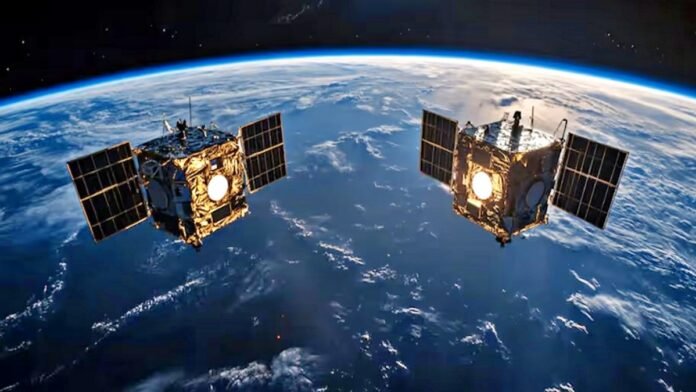
Key Points:
- Historic Achievement: ISRO successfully conducted its first-ever space docking experiment, making India the fourth country after the US, Russia, and China to achieve this feat.
- Significance: The success strengthens India’s position in space technology and lays the groundwork for future missions like Chandrayaan-4, space station construction, and other advanced programs.
- Mission Details: The Spadex mission, launched on December 30, involved two satellites, SDX01 and SDX02, which successfully docked in orbit.
- Docking Milestone: The docking process began on January 9 when the satellites were brought within 3 meters of each other and was completed on January 16.
- Technology Breakthrough: Space docking enables the transfer of humans or materials between spacecraft and is crucial for long-term missions and space station development.
New Delhi: India has etched its name in the annals of space history with the successful completion of its first-ever space docking experiment (Spadex), a technology crucial for advanced space missions and long-term habitation in space. The Indian Space Research Organisation (ISRO) confirmed the achievement on January 16, sharing the news via its official X handle.
The Spadex Mission: A Closer Look
- Launch Details: The Spadex mission was launched on December 30 aboard the PSLV-C60 rocket, which carried 24 payloads, including two satellites SDX01 (chaser) and SDX02 (target).
- Orbital Operations: The satellites, weighing 220 kg each, were placed in a circular orbit at 475 km.
- Docking Process: On January 9, the two satellites were maneuvered to a distance of 3 meters, and on January 16, they successfully docked in orbit, demonstrating India’s advanced space capabilities.
What is Docking Technology?
Space docking is a complex process where two spacecraft connect in orbit.
- Purpose: Docking technology allows the automatic connection of vehicles in space, enabling the transfer of humans or materials between spacecraft.
- Significance for India: The success of this mission is a technological breakthrough, paving the way for:
- Future lunar missions like Chandrayaan-4.
- Development of an Indian space station.
- Expansion of international collaborations in space exploration.
Global Recognition for India
With this success, India joins an elite group of nations the United States, Russia, and China that have successfully demonstrated docking technology. This achievement significantly enhances India’s reputation as a space technology powerhouse.
“The successful docking experiment is a testimony to India’s growing expertise in advanced space technologies,” said an ISRO spokesperson.
Future Implications
The successful demonstration of docking technology opens new possibilities for India in:
- Deep Space Exploration: Enabling assembly of large spacecraft in orbit.
- Human Spaceflight: Supporting long-duration missions and transfer of crew members.
- Space Station Development: Building and maintaining an Indian space station for research and habitation.
- Global Partnerships: Strengthening India’s position as a partner for collaborative space missions.
The success of ISRO’s Spadex mission marks a significant milestone in India’s space journey, demonstrating advanced capabilities in docking technology. This achievement not only strengthens India’s standing in the global space community but also lays a strong foundation for future explorations and space station development. As India continues to break barriers, the sky is truly no longer the limit.





















































